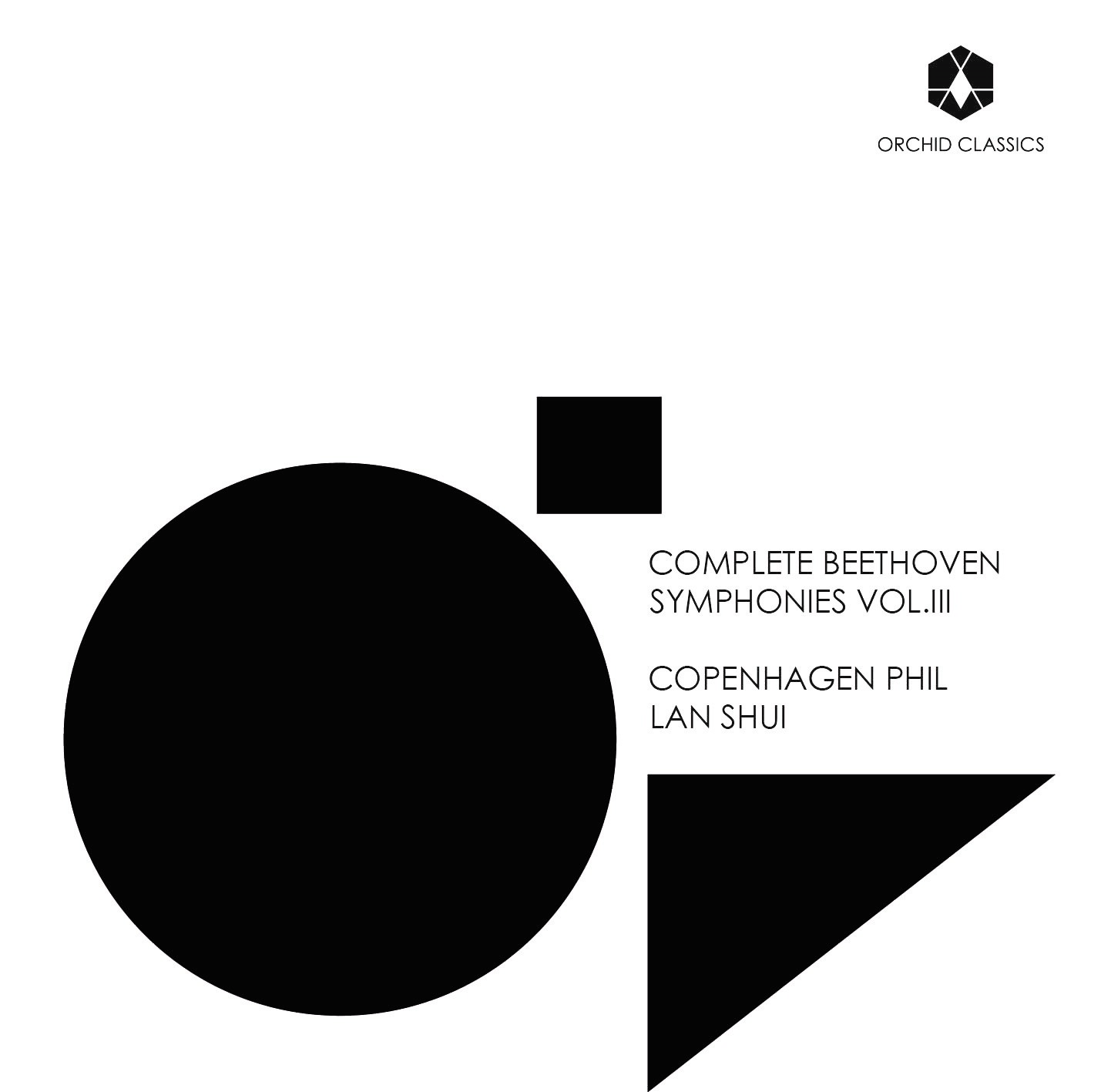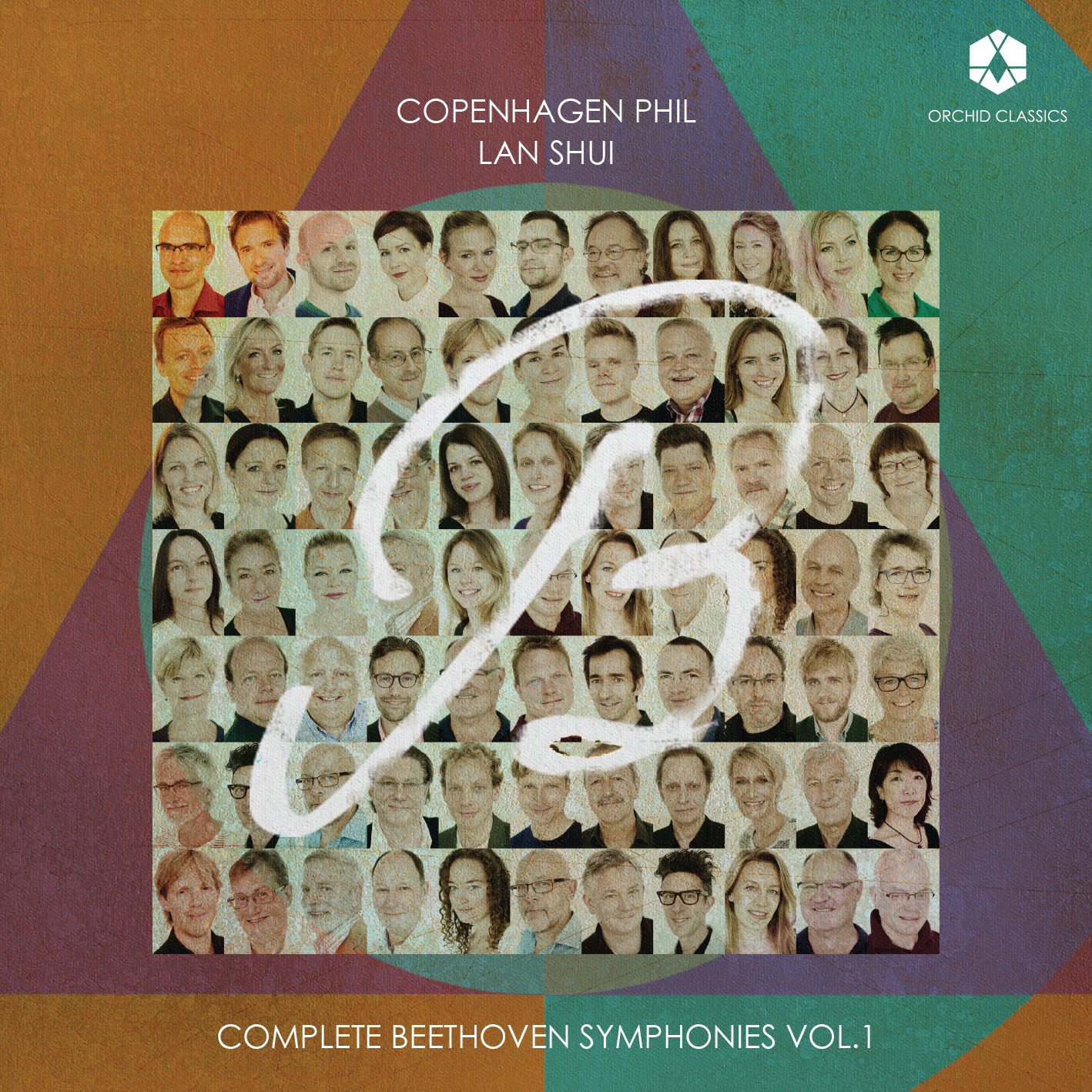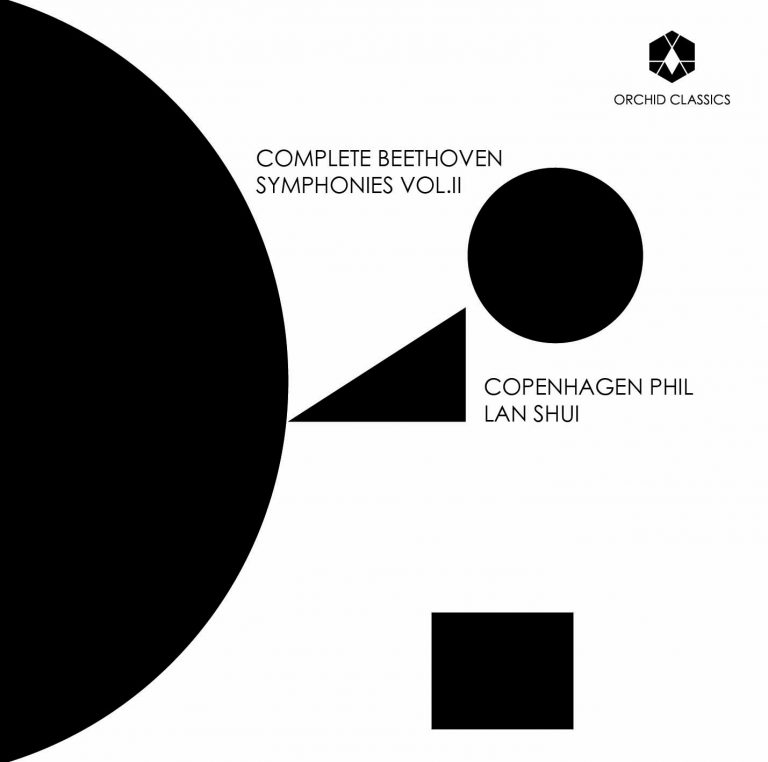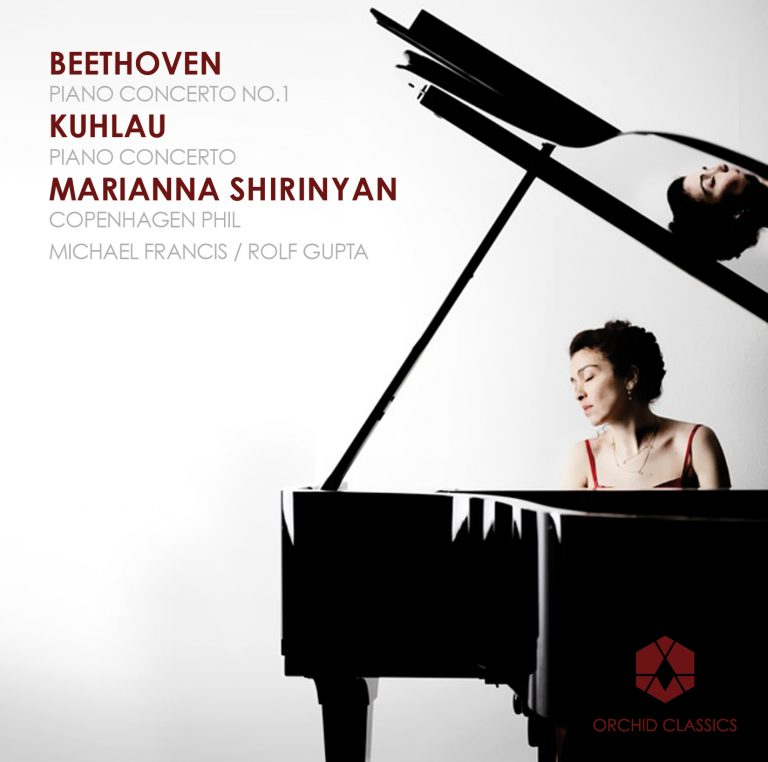Artist Led, Creatively Driven

Complete Beethoven Symphonies Vol.III
Copenhagen Phil
Lan Shui
Release Date: 1st February 2017
ORC100064
Beethoven Symphony No.9 in D minor, Op.125
1. I Allegro ma non troppo
2. II Scherzo: molto vivace
3. III Adagio molto e cantabile
4. IV Presto
Klara Ek, soprano
Elisabeth Jansson, alto
Thomas Cooley, tenor
Liao Changyong, baritone
Ars Nova Copenhagen, The Latvian Radio Choir
Copenhagen Phil
Lan Shui, conductor
Ludwig van Beethoven and the Ninth Symphony
Already as a young man in his twenties Beethoven both knew and treasured the works of the poet, philosopher, playwright and historian Friedrich Schiller. Despite the fact that An die Freude was a poem that occupied the composer for much of his life, it was in one of his very latest works that he finally found the perfect place for his setting of the poem’s triumphant text. The symphony is written in four movements, where the first three follow the traditional form and the fourth is an overwhelming finale with four vocal soloists and chorus. Beethoven was deaf when he wrote the symphony, which was performed for the first time in 1824, three years before the composer’s death. The premiere was a triumph for Beethoven, who stood at the podium and indicated the tempo for the music, while an assisting conductor stood beside him to hold the many musicians together. When the piece was finished the audience broke out in a thunderous ovation. Beethoven stood downcast, facing the orchestra, until one of the singers took him by the shoulder and turned him around so that he could see the moved and adoring public with his own eyes.
The aural landscape that was revealed to the audience that night must have been astonishing. Beethoven again departed from his normal practice in the order of the inner movements, as he had done in the Eighth Symphony, following the weighty first movement with a breakneck scherzo whose form was expanded to unprecedented proportions, and allowing the pastoral slow movement, with its seemingly unending melody, to provide a sharp contrast to the terrifying chaos of the introduction to the finale. It is as though the old world must be torn down in a violent din, before a new one — which begins with the baritone’s first verse — can be built out of the rubble.
The Ninth Symphony was ground-breaking in its time, and its message and musical strength has stood the test of centuries, and not only in the concert hall and on orchestral programmes; it has become a powerful symbol of peace, tolerance, and freedom. It was played on the occasion of the fall of the Berlin Wall in 1989, and has been adopted as a hymn by the European Union and in countless other contexts where fellowship, joy and freedom are celebrated with grandeur.
Wiebke Vestergaard is a cellist in Copenhagen Phil, and normally sits at the front of the stage to the right of the conductor, opposite the first violins. In their Beethoven recordings with Lan Shui, the orchestra has shifted the string section around, so that the cello section sits beside the first violins and just in front of the horns. The strings play their normal instruments in these recordings, but the horns and trumpets play on instruments that are copies of those from around Beethoven’s time. What difference does this make for the rest of the orchestra?
“The music has a different sound,” says Vestergaard. “The sound from the horns behind us isn’t so strong — it’s softer and warmer, and blends better with the rest of the orchestra. I think it works better for the style. We are not a very big orchestra, so it makes a lot of sense from that perspective.”
Conductor Lan Shui has decided to use Beethoven’s original tempo indications throughout these recordings—and they are fast! Faster than the symphonies are normally played. Wiebke Vestergaard: “We had to get used to the faster tempi in the beginning! At first we were a bit stressed, because in some cases it’s insanely fast. It’s especially challenging for the violins, but also for the cello section. When we play with other conductors now, who use the more traditional tempi, we think ‘isn’t this a bit slow?’ So Beethoven’s tempi have really got under our skin now.”
Lan Shui (the former chief conductor of Copenhagen Phil) sums up the benefits of using modern strings with historical brass and timpani in one word: “Lightness! It’s almost impossible to play heavily with this combination. An overall clarity emerges when everything works together — the size of the orchestra, forward motion, clarity, and lightness. The style suits me very well both as a person and a musician,” Shui says with a smile.
On Beethoven’s tempo indications, Shui acknowledges the controversy. “There are scholars who believe that Beethoven’s metronome — the actual device — was unstable or inaccurate, and that therefore it’s not really possible to trust his markings. Some also think that some of the music is simply unplayable at those speeds, whether or not the markings are accurate. I grew up with a much heavier, slower Beethoven style, but when I saw Beethoven’s tempo markings I started to ask myself ‘Why?’ Why should we play any slower than that? For some years I put the question aside, but I couldn’t help returning to it. I really feel this music this way — it really hangs together with Beethoven’s tempi. My heart connects with the music when I hear it this way.”
“For me the Ninth Symphony is really an oratorio. It picks up the baton from the St. Matthew Passion of J. S. Bach. Just like Bach tells a story in the St. Matthew Passion, Beethoven tells a story in the Ninth Symphony. From the baritone’s first phrase in the fourth movement, he is telling a story. But while the words are important, for me it is the colours that really mean something.” According to Lan Shui, Beethoven shows a special sensitivity to timbre, or tone colour, in all of his symphonies. Tone colour is usually associated with composers like Debussy and Ravel, but for Shui the concept is also relevant for Beethoven. “In the Sixth Symphony, for example, there is layer upon layer of colour. In the Ninth Symphony he adds voices to the mix — adds yet another layer of colour.”
Shui continues, “There are already so many recordings of Beethoven’s symphonies. Why should we make one more? For me, and for the orchestra, this is an important recording. We play the music in a very special way. Beethoven didn’t have any particular connection to Scandinavia, to the light here. But he had a strong connection to France, and was very happy when his music was played by French ensembles. The lightness that the French musicians gave to his music has in many ways disappeared over the years, and replaced with a stately kind of heaviness and seriousness. But this orchestra has just that lightness. I think that we offer listeners something very special with these recordings.”
© Trine Boje Mortensen, 2016
Klara Ek, Soprano
Klara Ek was educated in Stockholm at the Royal Conservatory and in London at the Royal Academy of Music. She has performed in baroque opera, including works by Jommelli and Händel, and roles in Mozart operas. Ms. Ek has appeared as a soloist in oratorio and choral productions with orchestras around the world, including performances of symphonies by Mahler, the Brahms Requiem, and Beethoven’s Ninth Symphony. Shehas collaborated with conductors such as Bernard Haitink, Gustavo Dudamel, and Nikolai Znaider.
Elisabeth Jansson, Alto
Swedish-born Elisabeth Jansson received her training at the Hochschule für Musik in Munich, the Royal Academy of Music in London, and the Opera Academy in Copenhagen. She had her professional debut in Copenhagen as Cherubino in a Royal Theatre production in 2003. Since that time she has had numerous roles both home and abroad, in operas ranging from Wagner’s Die Valküre to Puccini’s Madame Butterfly; from Verdi’s Falstaff to Ligeti’s Le Grand Macabre. Ms. Jansson is also highly sought after as a soloist in oratorio and concert productions.
Thomas Cooley, Tenor
Thomas Cooley is an American who has lived and worked in Munich for a number of years. Cooley is internationally sought after in concert and oratorio productions, and has performed roles in Britten’s War Requiem, Berlioz’ Nuits d’été, and in works of Stravinsky, Händel and Elgar. He appears frequently in roles in baroque operas. Cooley, who currently lives in the United States, has performed around the world and collaborated with conductors such as Michael Tilson-Thomas, Osmo Vänskä, Wolfgang Sawallisch, and Michael Schönwandt.
Liao Changyong, Baritone
Liao Changyong was trained at the Shanghai Conservatory, where he is now the Chairman of the Vocal Performance Department. He had his debut in 1995 and has since received honours in a long list of prizes and competitions. Liao Changyong has performed numerous operatic roles, including the title role in Rigoletto, the Toreador in Carmen, and Germond in La Traviata. He has also appeared with orchestras around the world, among them the San Francisco Symphony, London Symphony Orchestra and Tokyo Philharmonic.
Ars Nova
Since its inception in 1979 the Danish vocal chamber ensemble Ars Nova has performed both early and contemporary music at home and abroad. Ars Nova has established and maintained a high standard throughout all of its years, making the ensemble among the most sought-after in Denmark.
The Latvian Radio Choir
The Latvian Radio Choir was founded in 1940 and has since performed newly-composed Latvian music alongside repertoire from the 20th Century, the romantic era, and reaching all the way to the baroque and renaissance periods. The choir’s consistently high standards has secured international demand, and has resulted in numerous collaborations abroad, including tours in France, Germany and Austria, among others. Sivgards Kjava was appointed as the ensemble’s principal conductor in 1992.
Friedrich Schiller (1759-1805)
Even in his own lifetime the German poet Friedrich Schiller managed to influence the spiritual life of the whole of Europe. His dramas, including The Robbers, William Tell, and Don Carlos, stand as pillars of European theatre. In addition to dramas, Schiller wrote poetry, philosophical works, and novels. He had a significant friendship with Goethe, and worked extensively on a synthesis of the philosophical works of Immanuel Kant. It is difficult to overestimate Schiller’s influence on the literature and philosophy of his time. A long list of his poems and dramas has been set to music. Schiller penned the Ode to Joy in 1785.
Tradition and renewal
Copenhagen Phil, in the summer also known as Tivoli Copenhagen Phil, is based in Copenhagen, but as one of five nationally-supported Danish orchestras charged with bringing symphonic music to the entire country, is active all over the island of Zealand. The orchestra also tours internationally.
Copenhagen Phil is dedicated to renewing and developing itself in order to play a significant role in its culture and to maintain relevance in society at large. An important aspect of the orchestra’s culture is that everything is accomplished internally by the musicians and administration together. The orchestra’s comprehensive work with children takes as its starting point that all sensory and experience-based learning creates an opportunity to cultivate a relationship to art and culture, and that this opportunity renews itself again and again. Copenhagen Phil has developed new concert formats, including the indie-classical series “60 Minutes,” unique concerts where the orchestra works with artists across genres. The orchestra has also set a focus on establishing and cultivating a meaningful presence in the digital world, being among the first orchestras in the world to conduct successful “flash mobs,” which later became viral videos on YouTube. This success is being followed up by a large-scale digital project entitled “Open Orchestra”, where internet users all over the world can embark on a journey of musical discovery behind both the music and the orchestra’s musicians, and ultimately join in and play along with the orchestra.
The foundation under Copenhagen Phil’s activities is the performance of classical music on the highest level. An example of this ambition made manifest is the orchestra’s recent recordings of the complete Beethoven symphonies. But all of the orchestra’s activities start with the musicians’ own dreams and the wealth of their own ideas. In this way, tradition and renewal equal far more than the sum of their component parts.
Lan Shui, Conductor
Lan Shui was the Chief Conductor for Copenhagen Phil 2007-2015. Shui was educated and trained as a conductor in China, where he had his debut on the podium leading the Chinese Central Philharmonic Orchestra. He continued his studies in the United States in the 1980s, where he conducted numerous American orchestras, among them the Los Angeles Philharmonic and the Detroit Symphony Orchestra.
In 1997 Shui was named Music Director of the Singapore Symphony Orchestra, which has flourished artistically and achieved international recognition under his leadership. On top of his established engagements in Copenhagen and Singapore, Shui guest conducts regularly with many of the world’s leading orchestras, collaborating with artists such as Hilary Hahn, Yo-Yo Ma, and Maxim Vengerov.
In addition to his intense work with Copenhagen Phil over a period of several years on the cycle of Beethoven Symphonies, Shui has also performed works of, among others, Berlioz, Nielsen, Britten, and Mendelssohn with the orchestra. Lan Shui is also passionate about contemporary music, and has conducted numerous premieres in various places around the globe. He conducted the Danish premiere of Bent Sørensen’s Trumpet Concerto with Copenhagen Phil in 2013.









